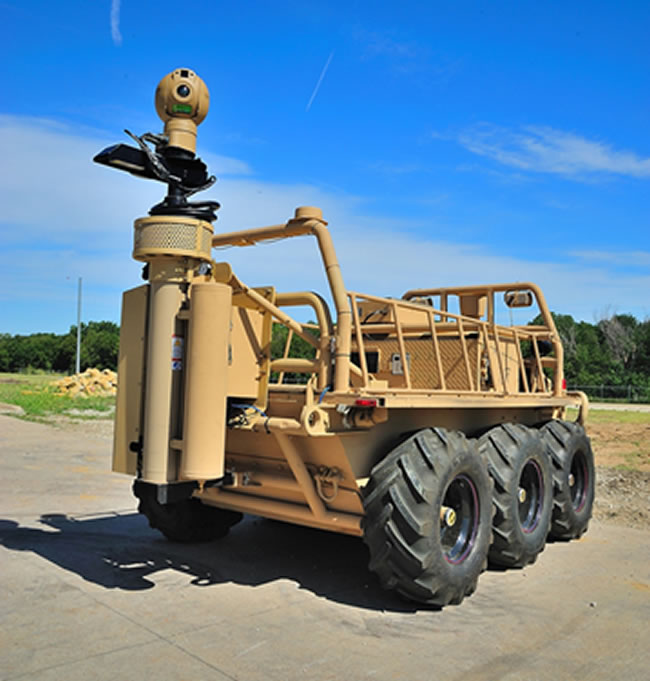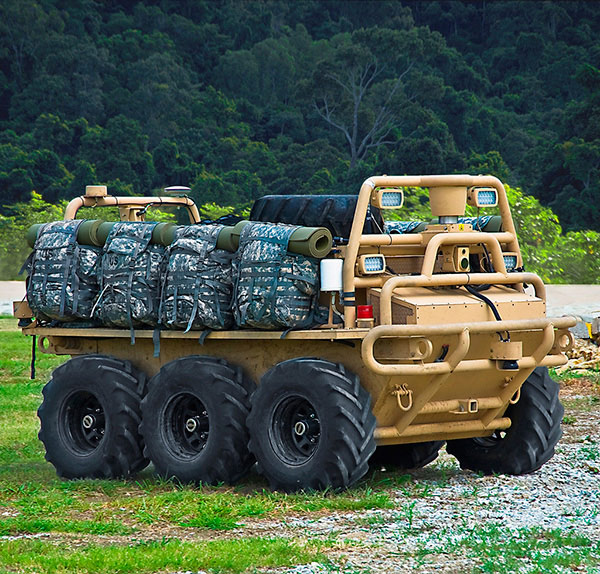

Lockheed Martin completed demonstrated the capability to control the Squad Mission Support System (SMSS) robotic vehicle beyond line of sight. The demonstration took place at Camp Grayling, Mich.where the SMSS was controlled via satellite link 200 miles away. The robotic vehicle conducted several battlefield surveillance operations while being controlled via satellite from the U.S. Army’s Tank Automotive Research, Development and Engineering Center in Warren, Mich., over 200 miles away.
The demonstration proved that the combination of autonomy, vehicle mobility, surveillance sensors and satellite communications can provide a means of battlefield situational awareness while keeping soldiers out of harm’s way. During the demonstration, SMSS was equipped with a Gyrocam 9M Tactical Surveillance Sensor and a General Dynamics SATCOM Technologies “SATCOM-On-the-Move” system.
“These demonstrations allow the Army development communities to better understand capabilities available to them with SMSS right now,” said Joe Zinecker, director of combat maneuver systems at Lockheed Martin Missiles and Fire Control. “We are showing our customers innovative ways to employ SMSS vehicles in missions while demonstrating that we are ready to move from technology development to fielding these valuable and mature new capabilities.”

SMSS incorporated a telescopic mast carrying the Gyrocam 9M stabilized EO payload, acquiring on-the-move, high-resolution electro-optical and thermal video. Through the tests, SMSS movements and sensor functions were controlled and monitored from the remote station via tele-operation, demonstrating control of the vehicle through the satellite. In another simulated mission, the operator defined a pre-planned route with the SMSS employing autonomy to navigate the course with minimal operator intervention, performing various autonomous functions, such as ‘follow-me’, ‘go-to-point’ and ‘retro-traverse’.
Lockheed Martin conducted several demonstrations of the SMSS for the U.S. Army during 2012, outfitting the vehicle with different mission equipment packages to conduct logistics, counter-IED, mobility, dismounted-soldier support, and reconnaissance, surveillance and target acquisition. Four SMSS vehicles were successfully tested by soldiers in Afghanistan in 2012 as transport and logistics vehicles to lighten the load for soldiers in combat operations.
“The concept of an affordable common mobility platform coupled with specialized mission equipment packages is the right answer for UGVs to reduce development, production and sustainment costs, while providing maximum flexibility for commanders,” Zinecker said. “SMSS continues to demonstrate its readiness to enter into an engineering and manufacturing development program.”

















